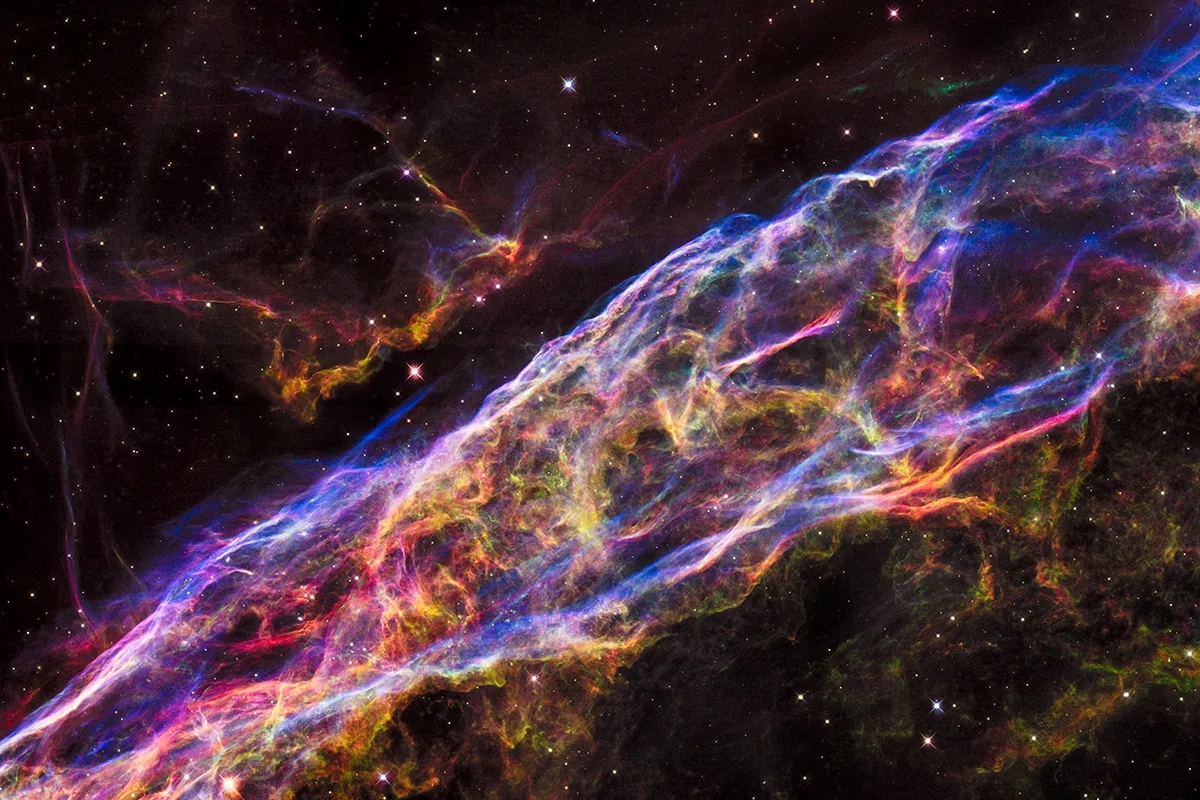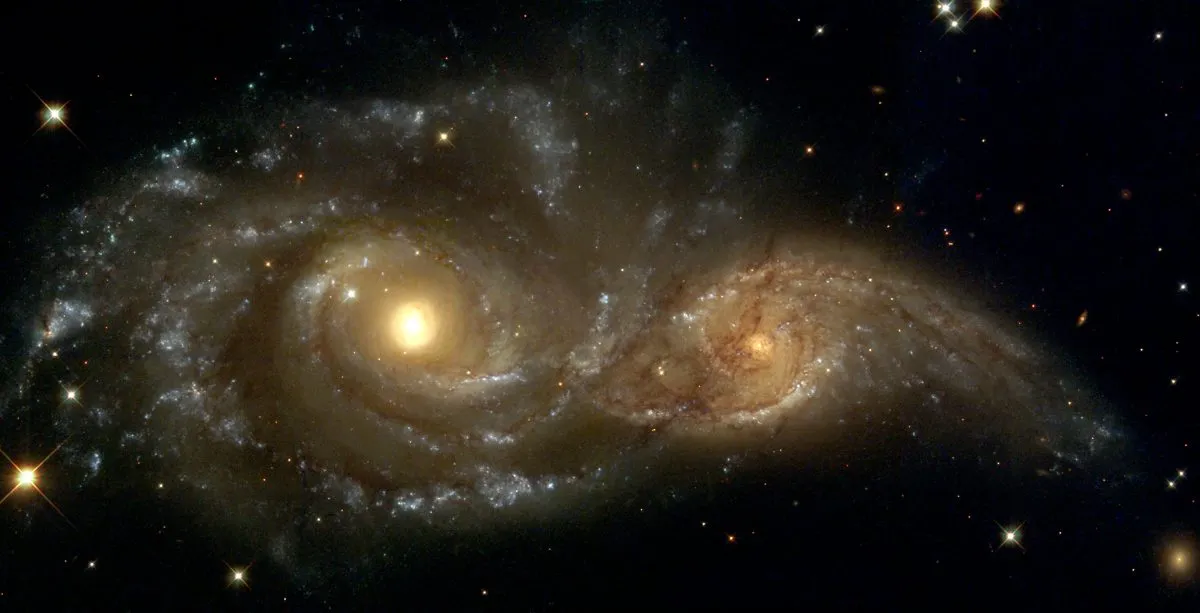Astrophotography as an art is a relatively new phenomenon. Its use outside of science was once considered a luxury, expendable only for purposes of education. But over the years, the influence of public outreach has shown its merit.
Many of science’s most influential images are from astronomy. Pictures of distant nebulae, spiral galaxies and icy planets have become iconic: some even visible in mainstream culture.
In recent years, photos of the cosmos have fallen down from the night sky to grace everything from postcards to umbrellas to dresses.
These photos capture the public’s imagination unlike any other, and it’s not all due to the subject matter.
For more tips and tricks, read our guide on how to photograph the stars. These images seem to be snapshots of the Universe frozen in time, but in reality their creation is much more complex.
Creating captivating images of the night sky is a craft that requires knowledge of fine art as much as science: but not one that only institutions can practise.
By applying a few simple principles honed by artists and the imaging teams working on space telescopes, amateur astrophotographers can transform their photos from standard shots into masterpieces.
“The reinstatement of the servicing mission of Hubble was in part due to the images,” says Jayanne English, professor of astronomy at the University of Manitoba and former coordinator at the Hubble Heritage Project.
“It was the whole public outreach machinery from NASA that showed how good the Hubble was, and when it wasn’t going to be serviced, there was a public outcry.”
Today, nearly every large institution has dedicated resources to construct these images from scientific data.

Most, like those created by the Hubble Heritage team, go the extra step to make images that are both educational and entertaining: images people can’t look away from, and which encourage them to ask questions.
Prof English has used her formal background in both fine art and astronomy to develop a toolkit to create entrancing images from astronomical data.
“You first have to know how an image is read,” she says. “If you learn some techniques, like composition and colour theory, then you’ll make astronomy images that viewers will appreciate more.”
Bringing colour to the night sky
If a picture is indeed worth a thousand words, then your job as an artist is to figure out what story you wish to tell with the image you have.
Crafting a picture, like writing a story, requires a main character and a plot with a bit of action.
“If you can think about what’s really fascinating about the object to you — in terms of process, phenomena, what makes it different from other objects — that’s the place to start,” recommends English.
Once the storyline is set, you can begin playing with colours, which is not as easy as matching filters to the colours our eyes would see.
Our eyes are only effective at distinguishing wavelengths between 390 and 700 nanometers — violet to red — and as dusk slips to darkness the cones in our eyes, which help us distinguish colours in daylight, become ineffective, further reducing that range.
To create a compelling picture the image creator must select a palette of colours that is appealing to the eye, yet still able to highlight the characters in their story.
Traditionally, colours are chosen to match their appropriate wavelength — such as making features images with an H alpha filter a corresponding red — and institutions have set palettes they consistently use to show specific wavelengths.

However, there is some room for creative freedom given the wide range of reds and blues our eyes can distinguish.
Since lighter shades draw the eye more effectively, they are useful in drawing the eye to a particular part of the image.
English discourages copying the exact same colours as institutions: “You can make your images more poetic, enthusiastic, and artistic.”
Selecting colours becomes more complex depending on the science you wish to show in the image.
Intuitively we associate red with hot and blue with cold, but in reality the hottest stars burn blue and the coolest red.
Creating a scientifically valid image with hot blue stars will not create an intuitive picture to the general public.
Framing the cosmos
Composing an image is just as important in astrophotography as it is in earthly photography, and although we can’t change our viewpoint into the Universe, we can change our perspective.
When an image is being taken, this is easily adjusted through the focal length of the lens.
A longer focal length will show a smaller region of the sky, which is useful when you want to focus on smaller details.
Changing focal lengths may also help create enough space for the rule of thirds — a principle in which the focus of the image is offset from the centre.
In some cases, taking a different perspective can be a way to add depth to an image.
Master artists place interrupting objects strategically through their composition to direct and distract the eye, thus making their image one that captures the attention.
Images in scientific papers are typically shown with north at the top and east to the left, but a simple 180-degree rotation can transform a flat image, like that of the merging galaxies NGC 2207 and IC 2163, into a dynamic scene, where one galaxy appears to pop into the foreground.
The sweeping arms of the galaxy in the rotated picture draw the eye back into the photo, seemingly giving it more depth.
When composing an image, it can help to check different orientations to see which are most engaging.

To the canvas and beyond
As art becomes science, science is readily becoming art.
Astronomers – amateur and professional alike – increasingly moonlight as artists, borrowing techniques from great masters and harnessing the way our eyes talk to our brain to make the compelling works that awe and inspire us.
Great images, after all, aren’t stumbled upon, but carefully crafted through a balance of science and ascetics.
All it takes is a creative eye and an appreciation for the tools of art.
Top tips for creating artistic astrophotos
1
Pick a question to answer
Start with a scientific question and design the image, using colour and composition, around the answer to that question. The more excited you are about the question, the more exciting the image will be.
2
Frame your image
Compose your shots such that the components are balanced and draw the eye in.
3
Create motion
Make sure your image isn’t static by cropping and offsetting the main element from the center of the image.
Mara Johnson-Groh is a photographer and a science writer for NASA.